Even common trees are amazing enough, but some trees are just spectacular, whether by their sheer size, age or shape or through mysterious properties they seem to possess.
There are probably hundreds of majestic and magnificent trees in the world – of these, some are particularly special. Here we present some of the Most Amazing, Most Magnificent, Most Exotic and wonderful trees from around the world.
A tree is a wonderful living organism which gives shelter, food, warmth and protection to all living things. It even gives shade to those who wield an axe to cut it down – Buddha.
1. Eucalyptus Deglupta
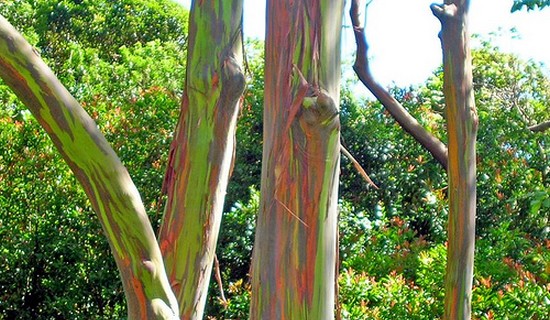
Eucalyptus deglupta is a tall tree, commonly known as the rainbow eucalyptus, Mindanao gum, or rainbow gum. It is the only Eucalyptus species found naturally in the Northern Hemisphere. Its natural distribution spans New Britain, New Guinea, Ceram, Sulawesi and Mindanao.
The unique multi-hued bark is the most distinctive feature of the tree. Patches of outer bark are shed annually at different times, showing a bright green inner bark. This then darkens and matures to give blue, purple, orange and then maroon tones.
In the present day this tree is grown widely around the world in tree plantations, mainly for pulpwood used in making paper. It is the dominant species used for pulpwood plantations in the Philippines.
2. Silk Floss Tree

The silk floss tree is a species of deciduous tree native to the tropical and subtropical forests of South America. It has a host of local common names, such as palo borracho. It belongs to the same family as the baobab and the kapok. Another tree of the Ceiba genus, C. chodatii, often receives the same common names. The beautiful Silk Floss tree (Ceiba speciosa) is one of the many members of the mallow family. Endemic to tropical and subtropical forests of South America (Brazil, Paraguay, Argentina etc.), this tree sometimes reaches more than 81 feet in height. Its trunk and branches are studded with sharp conical prickles (giant spines), which help it to conserve water for subsequent dry periods.
See also; Top 10 Most Amazing Tree Tunnels.
3. The President, Third-Largest Giant Sequoia Tree In The World, California

The President tree located in Sequoia National Park in California. It stands 241 ft (73m) tall and has a ground circumference of 93 ft (28m). It is the third largest giant sequoia in the world.
4. Methuselah Tree
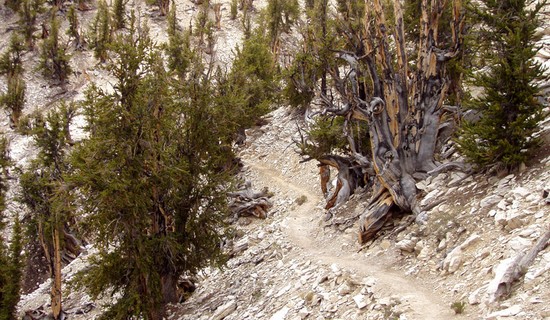
Methuselah is a Great Basin Bristlecone Pine (Pinus longaeva) tree growing high in the White Mountains of Inyo County in eastern California. Its age of around 4844–4845 years makes it the world’s oldest known living non-clonal organism. The ancient tree is named after Methuselah, a Biblical figure having the longest mentioned lifespan in the Bible of 969 years.
5. Silk Cotton Trees of Ta Prohm

Ta Prohm is a 12th century temple in Seam Reap Province, Cambodia. The trees growing out of the ruins of Ta Prohm, a Cambodian temple, are fascinating. There are two main species that predominate in Ta Prohm. Some specialists claim that the larger tree (see picture) is a Silk Cotton tree (Ceiba pentandra), others think that it’s a Thitpok (Tetrameles nudiflora). The smaller one seems to be a Strangler Fig tree. The giant tree roots attract thousands of visitors each year.
6. Dragonblood Trees

Native to the Socotra archipelago, part of Yemen, located in the Arabian Sea, the dragonblood tree earned its fearsome name due to its crimson red sap, which is used as a dye and was used as a violin varnish. It is so called due to the red sap that the trees produce.
7. Teapot Baobab

There are eight species of Adansonia in the world. The typical name for them is a baobab. When in Madagascar, you can meet differently shaped and different sized baobabs in one place. You can meet the Teapot tree in Ifaty, Southwestern Madagascar especially. The tree is estimated to be about 1000 years old. The Baobab can store more than 31,000 US gallons of water (120,000 liters) to endure the severe drought conditions.
8. Elia Bouybon, Olive Tree of Vouves
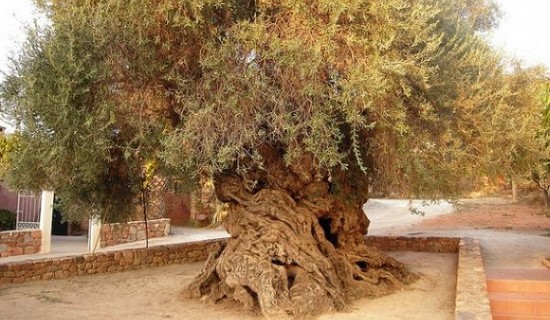
The Olive tree of Vouves is an olive tree in the village of Ano Vouves on Crete in Greece. It is one of seven olive trees in the Mediterranean believed to be at least 3,000 to 4,000 years old. Although its exact age cannot be verified, the Olive Tree of Vouves might be the oldest among them, estimated at over 3500 years old, the Olive Tree of Vouves is 15 feet thick at the base. It still produces olives, and they are highly prized. The ancient olive tree is visited by approximately 20.000 people every year. It is located in the village of Ano Vouves, Crete.
9. Angel Oak
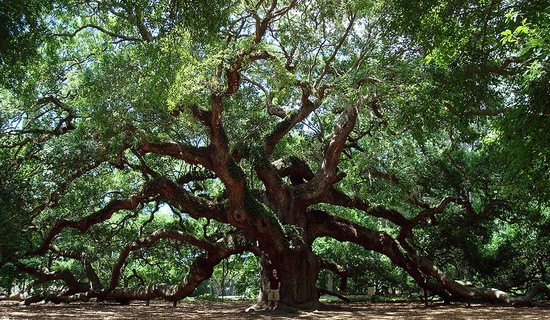
The Angel Oak Tree is a Southern live oak located in Angel Oak Park on Johns Island near Charleston, South Carolina. The Angel Oak Tree is estimated to be 300-400 years old, stands 66.5 ft (20 m) tall, measures 25.5 ft (7.7 m) in circumference, and produces shade that covers 17,000 square feet (1,579 m2). The largest limb is 89 feet long and 11.5 feet in circumference. This magnificent tree is thought to be one of the oldest living organisms east of the Mississippi River.
10. Tree of Life
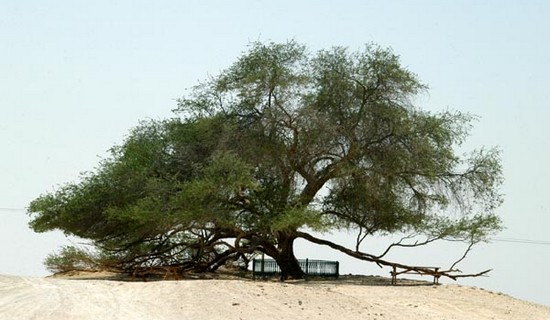
The Tree of Life’s mystique is not its size, age or shape – though it is indeed large and beautiful. What makes this 400-year-old tree so amazing is the fact that it stands alone in a barren desert at the highest point in Bahrain, in an area that is completely free of water. Where nothing else will grow, this tree seems to radiate with life. Local inhabitants believe that it stands in the actual location of the Garden of Eden, and people flock to it in droves.
The tree is a local tourist attraction, as it is the only major tree growing in the area. The tree is visited by approximately 50,000 tourists every year and the tree often is damaged by graffiti carvings. It is also believed to be the site for cults practising ancient rites.
11. The Tree of Tule
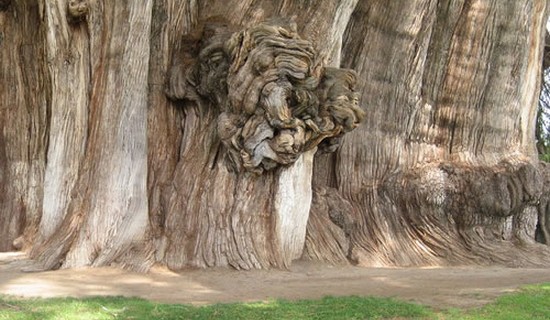
Árbol del Tule (The Tree of Tule) is a tree located in the church grounds in the town center of Santa María del Tule in the Mexican state of Oaxaca, approximately 9 km east of the city of Oaxaca on the road to Mitla. It is a Montezuma cypress (Taxodium mucronatum), or ahuehuete (meaning “old man of the water” in Nahuatl). It has the stoutest trunk of any tree in the world. In 2001 it was placed on a UNESCO tentative list of World Heritage Sites. This is still slightly larger than the next most stout tree known, a Giant Sequoia with a 8.98 m (29.5 ft) diameter. The age is unknown, with estimates ranging between 1,200 and 3,000 years, and even one claim of 6,000 years.
12. Wind-Swept Trees In New Zealand

These trees on Slope Point, the southern tip of New Zealand, grow at an angle because they’re constantly buffeted by extreme antarctic winds. Find out more here.
13. Axel Erlandson’s Circus Trees
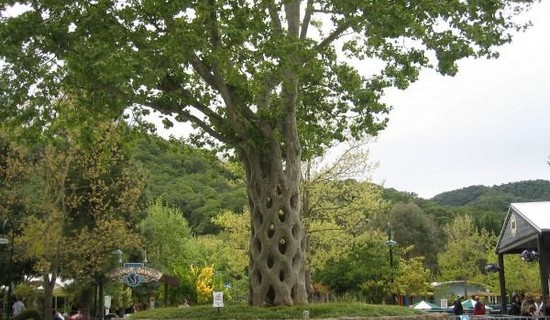
Axel Erlandson was an American ‘arborsculptor’ who planted trees in specified patterns and pruned, bent and grafted them into shapes not seen in nature. He opened a horticultural attraction in 1947 near Santa Cruz, California named “The Tree Circus”, and people flocked in from all over the country to view his unusual and striking creations. After the land changed hands several times, 24 of Erlandson’s trees ended up in the Gilroy Gardens amusement park. The 5 pictured are the “Basket Tree”, “Telephone Booth Tree”, the “Two Leg Tree” and two with unknown names.
14. Deodar
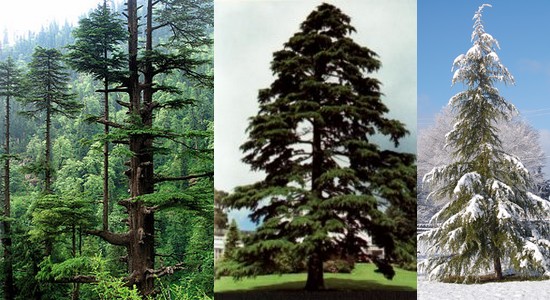
Deodar got derived from Sanskrit term devadāru, which means “wood of the gods”. This tree is also the national tree of the country Pakistan.
Cedrus deodara or Deodar is a species of cedar native to the western Himalayas in eastern Afghanistan, northern Pakistan, Kashmir (Neelum Valley), northern India (Himachal Pradesh and Uttarakhand), southwesternmost Tibet and western Nepal, occurring at 1,500–3,200 m (4,921–10,499 ft) altitude. It is a large evergreen coniferous tree reaching 40–60 m (131–197 ft) tall with a trunk up to 3 m (10 ft) in diameter. It has a conic crown with level branches and drooping branchlets.
15. Crooked Forest of Gryfino
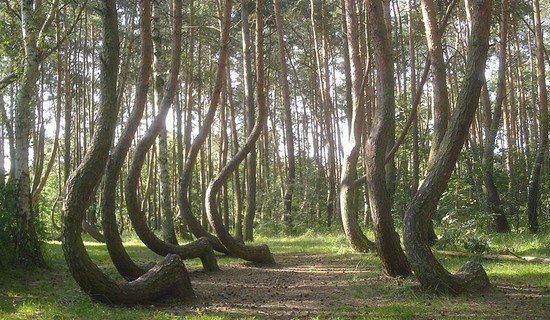 A grove of strangely shaped pine trees can be found in Nowe Csarnowo, Poland. More than 400 pine trees were planted here in 1930. It is believed that special tools and techniques were used to make the trees receive this shape. There is an opinion that the aim of planting the trees this way was for the use of making bent-wood furniture or ribs for boat hulls. Whatever the motives for such planting were, they did not last long. During World War 2 the planting was stopped. Now what remains of it is a fantastic grove with mysterious trees all around.
A grove of strangely shaped pine trees can be found in Nowe Csarnowo, Poland. More than 400 pine trees were planted here in 1930. It is believed that special tools and techniques were used to make the trees receive this shape. There is an opinion that the aim of planting the trees this way was for the use of making bent-wood furniture or ribs for boat hulls. Whatever the motives for such planting were, they did not last long. During World War 2 the planting was stopped. Now what remains of it is a fantastic grove with mysterious trees all around.

0 Comments